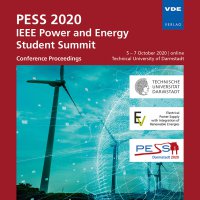Using nontraditional current and voltage converters to create compact power devices of the future
Conference: PESS 2020 - IEEE Power and Energy Student Summit
10/05/2020 - 10/07/2020 at online
Proceedings: PESS 2020
Pages: 6Language: englishTyp: PDF
Authors:
Rafikov, Vadim R.; Gotovkina, Elena E.; Yablokov, Andrew A.; Lebedev, Vladimir D. (Ivanovo State Power Engineering University, Ivanovo, Russian Federation)
Abstract:
One of the prior tasks in the development of the electric power industry is the creation of smart electric power systems with active adaptive grids (Smart Grids), and hence, the introduction of “digital” substations. Significant shortcomings in traditional electromagnetic current and voltage transformers (magnetic core saturation, residual magnetization, impact of electromagnetic disturbances and interferences in transient states and large dimensions) prevent their full use as sources of information for relay protection, automation and electric power accounting devices in the creation of smart electric power systems. At the same time, the rapid development and widespread introduction of microprocessor technology facilitate the creation and use of nontraditional current and voltage converters such as Rogowski coils, resistive dividers, compact current transformers, also galvanomagnetic effect converters. This article describes research into the heat, frequency and metrological characteristics of untraditional converters performed during the construction and design of a digital combined current and voltage transformer. The article shows the design of a digital combined transformer with nontraditional current and voltage converters, which precludes the shortcomings of traditional electromagnetic converters and enables the transformer to organically fit in to the Smart Grid concept.


